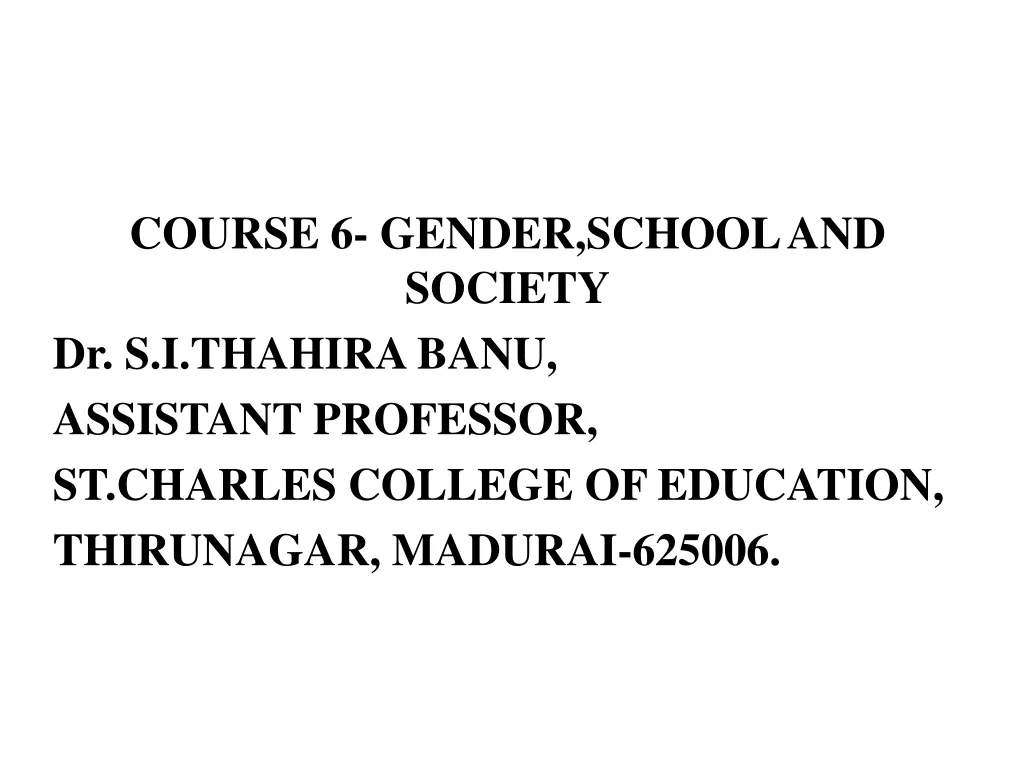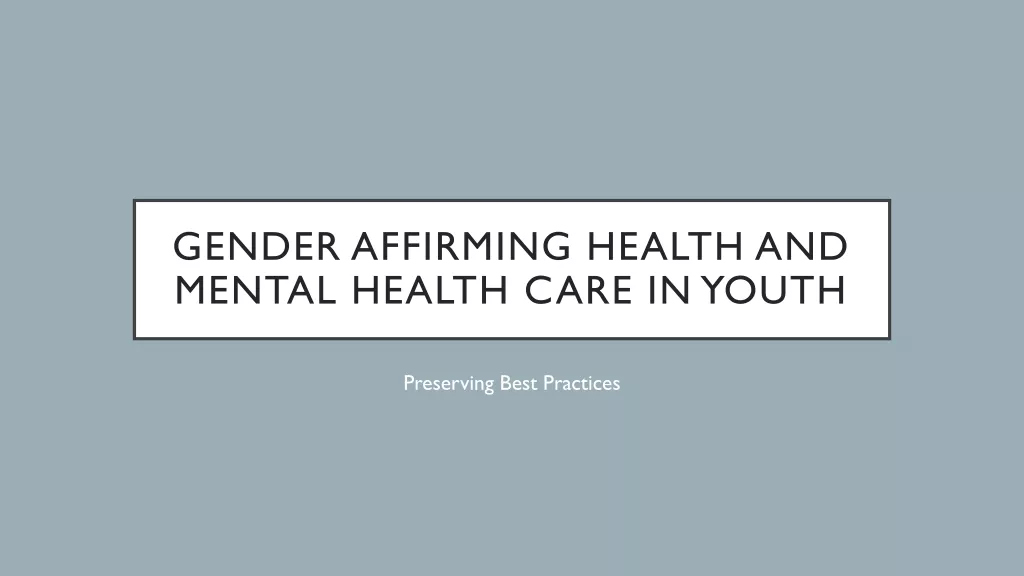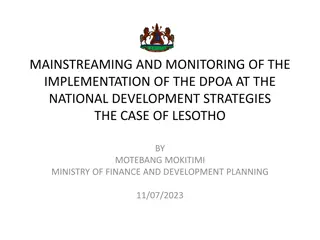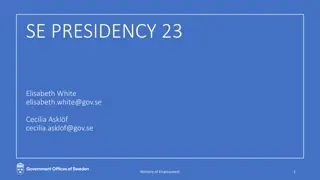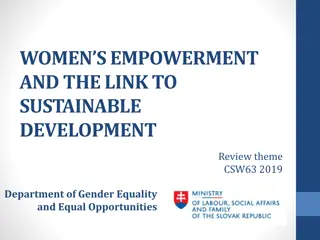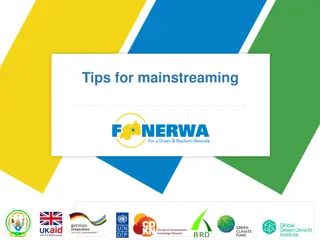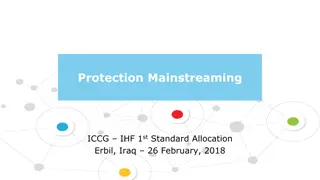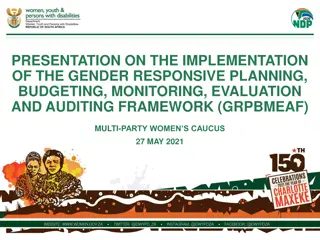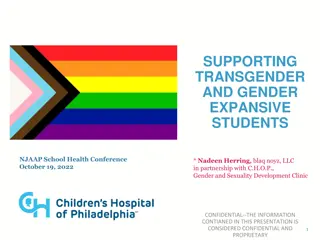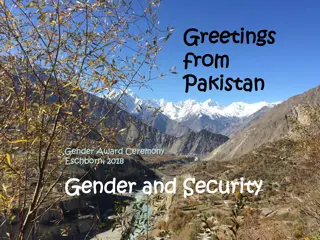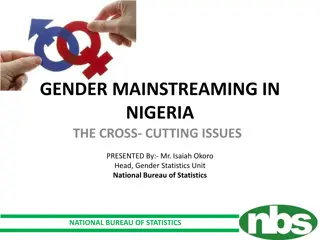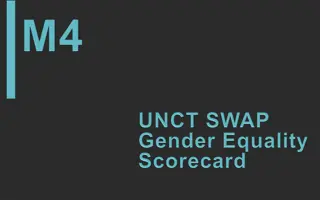Gender Mainstreaming:
Gender mainstreaming in policy-making involves incorporating both women's and men's interests to promote gender equality. Good nutrition is essential to overcome gender barriers, with women and girls being disproportionately affected by malnutrition. Empowering women and girls through access to good nutrition is crucial for their health, dignity, and overall well-being. Capacity building, training, and reporting on gender-sensitive outcomes are key strategies to advance gender equality in nutrition programs.
Download Presentation

Please find below an Image/Link to download the presentation.
The content on the website is provided AS IS for your information and personal use only. It may not be sold, licensed, or shared on other websites without obtaining consent from the author.If you encounter any issues during the download, it is possible that the publisher has removed the file from their server.
You are allowed to download the files provided on this website for personal or commercial use, subject to the condition that they are used lawfully. All files are the property of their respective owners.
The content on the website is provided AS IS for your information and personal use only. It may not be sold, licensed, or shared on other websites without obtaining consent from the author.
E N D
Presentation Transcript
Gender Mainstreaming: an approach to policy-making that takes into account both women's and men's interests and concerns. 1985 Nairobi World Conference on Women, concept first introduced 1995 Fourth United Nations World Conference on Women in Beijing, adopted as a tool to promote gender equality at all levels. 1998, the Council of Europe defined The (re)organisation, improvement, development and evaluation of policy processes, so that a gender equality perspective is incorporated in all policies at all levels and at all stages, by the actors normally involved in policy-making .
such as gender and health, nutrition, gender in agricultural value chains, gender and climate change adaptation, gender and globalization& liberalization for mainstreaming gender concerns into the national programmes and policies;
Good nutrition is crucial to overcoming gender Good nutrition is crucial to overcoming gender barriers. barriers. We apply a gender lens to all of our programs, projects and partnerships to ensure women and girls can be empowered advocates for their own health and nutrition.
Access to good nutrition is a basic human right and a fundamental component of human dignity. Yet women and girls are twice as likely to suffer from malnutrition as men and boys, due to a combination of biological, social and cultural reasons. Women and Girls are empowered to claim their rights, it leads to improved health and nutrition for themselves and a better quality of life for their families and communities. Gender equality will not be possible as long as women and girls suffer from malnutrition at a much higher rate than men and boys. Women and Girls Women and Girls are hit hardest by are hit hardest by malnutrition. malnutrition.
Providing capacity building and organization-wide gender equality training for staff Enhancing technical advice and quality assurance in gender analysis to inform the design, implementation, monitoring, and evaluation of gender- sensitive and responsive programs Reporting on gender-sensitive outcomes to track their progress and to serve as a model for other nutrition programs Reviewing progress on an annual basis to guide how Nutrition International will continue to strengthen capacity to promote gender equality and to set the groundwork for the next stages of gender mainstreaming Grounded in the United Nation s Sustainable Development Goals, Global Nutrition Targets 2025, and global efforts to promote gender equality:
Gender Gender mainstreaming mainstreaming approach considers approach considers differences differences between men and between men and women to ensure women to ensure fair results fair results. . Supporting deeper consideration of gender equality into all aspects of our programs Strengthening capacity to promote gender equality and women s empowerment Designing and delivering gender-sensitive nutrition programming at scale Delivering on gender-sensitive outcomes Measuring and tracking knowledge, attitudes and practices related to gender equality Tracking equitable participation in training and capacity building Analysing gender as part of continuous learning Filling gender data gaps Encouraging equitable participation Advocating for the importance of improving children s, adolescent girls and women s nutrition to advance gender equality
conceptual framework around CC and gender conceptual framework around CC and gender (Kristjanson et al., 2017) include four main components; climate signal, vulnerability context adaptation arena wellbeing outcomes.
Example of conceptualized link between Food security Example of conceptualized link between Food security and nutrition and gender and nutrition and gender (Jost et al., 2014 in CEPAL et al., 2018) a) Analyze gender differences in vulnerability and existing adaptation and mitigation strategies; b) Obtain data disaggregated by sex of access to productive resources, work, use of time, and group membership; c) Analyze the suitability of existing institutions and policies to address the impacts of CC on gender; d) Use all the information collected, about the gender disparity, to inform the gender sensitive interventions in agriculture and CC.
Gender-Climate Change- Food Security and nutrition Reducing gender gap in agriculture has a great potential to increase yields and reduce food insecurity and malnutrition (FAO 2011b; UNDP, 2012). The three main challenges; (1) improving food and nutrition security of poor women, men, girls and boys, (2) reducing gender and social inequalities, (3) favoring sustainable development (Beuchelt and Badstue, 2013). as CC produces extreme events such as drought, floods, land degradation, the risks to food security and agricultural productivity increase (IICA, 2018; Sida, 2015). Thus, there is a need to foster men and women adaptive capacity.


